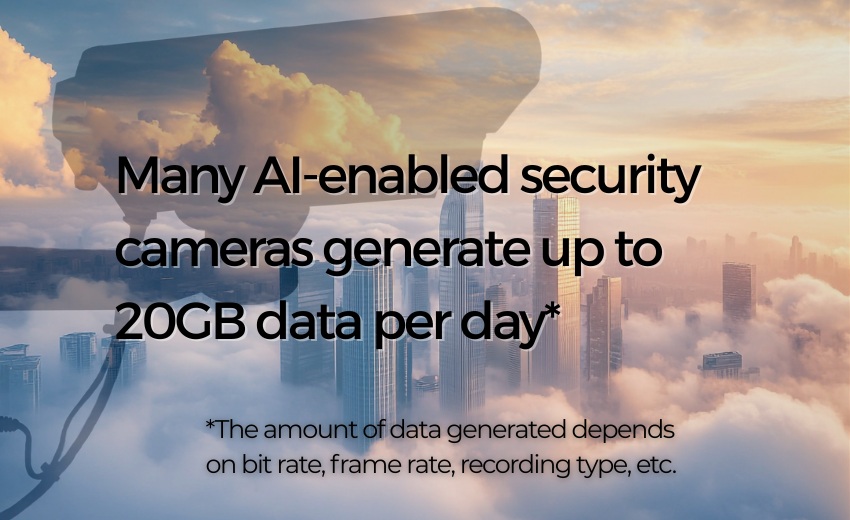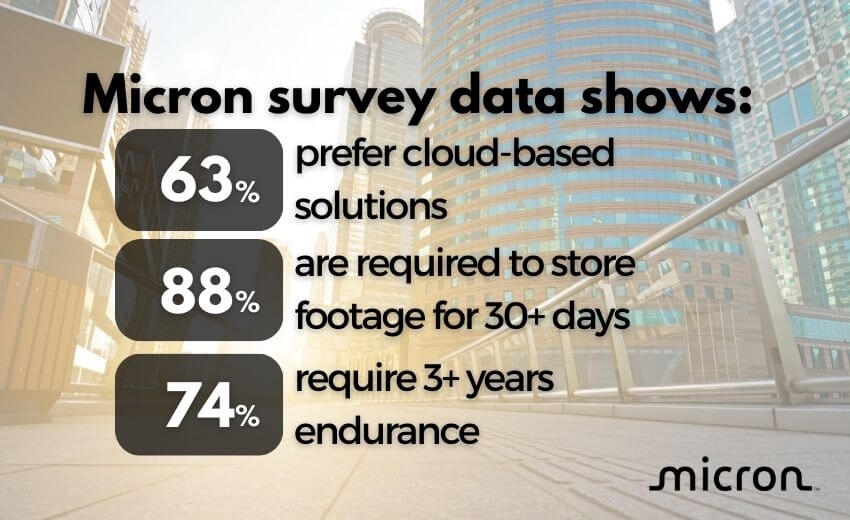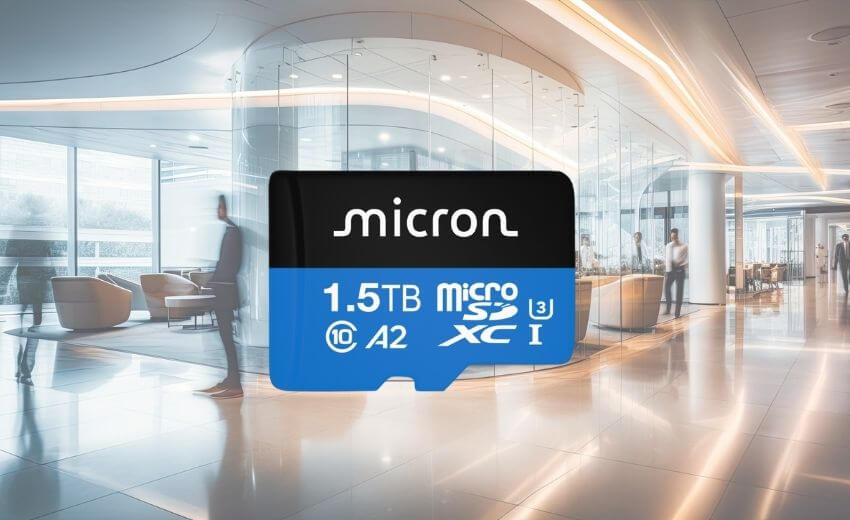The smart building trend is continuing, driving sustained growth momentum in the market
from US$151 billion in 2025 to an estimated US$570 billion or more by 2030. New smart building projects around the world feature IoT infrastructures that integrate many different classes of sensors, as do an increasing number of older commercial buildings that have been retrofitted to keep up with the trend. Turning old buildings smart is as much a growth driver as impressive new projects.
The smart building trend, however, goes far beyond sensors—it drives growth in the market for many components and devices that are part of intricate IoT infrastructures, including storage devices such as microSD cards tailored to the highest standards by manufacturers like Micron.
With increasing adoption across different scenarios, challenges to system integrators and solution providers are mounting, too, not least because the functionalities of IoT devices become more manifold.
Smart building, efficient building
As the smart building trend increasingly coincides with sustainability and energy-efficiency needs, AI-driven optimization is becoming a central field of application in commercial real-estate projects.
In order to save energy, modern smart buildings are equipped with IoT-enabled HVAC (heating, ventilation, and air conditioning) systems that integrate data from dedicated sensors for temperature, humidity and airflow, among others—all of which regulate not just heating and air conditioners, but also, for example, smart shades and other solutions that were previously operated manually.
In general, smart buildings seek to detect the needs of its occupants and activate the built-in systems that address those needs seamlessly.
Cameras—the IoT heavy lifter
Central to any system that keeps track of what’s happening inside a building is a device that has been central to the equipment of commercial real estate before buildings first turned smart: The humble security camera, which—in its most-recent AI-powered iteration—detects whether and how spaces inside a building are used by its occupants
Not only when it comes to climate controls, cameras thus play central roles in other areas of IoT deployment. For example, access control systems, especially those featuring touchless identity verification through facial recognition, also rely heavily on the integration of security cameras. Even if facial recognition is deactivated in favor of other biometrics methods or even classical key cards, they are central to preventing attempts by unauthorized people to gain access to the building or restricted areas within, for example through tailgating.
Smart access control systems can make role-based and context-aware decisions, for example about whether they grant a user access at night, as permissions are dynamically assigned based on user roles and the time of the day.

In any case, the more complex and automated the system, the more it relies on a level of AI awareness that only cameras can provide. Recent advances in the technology make it possible. The latest generation of IP cameras often feature strong edge AI capabilities that enable them to perform tasks that once required multiple dedicated sensors—a boon for integrators faced with demands to turn buildings smart (or smarter) without causing disruption or spiraling costs.
A simple camera update might result in a significant leap into the smart building space. It might only take an upgrade of security cameras in key spots. If possible, integrators and solution providers will seek to reuse the wiring of previously installed devices. This reduces the number of additional devices that are needed, and helps avoid the common problem of hardware clutter.
From security to behavior analytics and more
Regardless of whether a building has been smart from the start or was comprehensively retrofitted, cameras enable AI-based security features, trigger alerts and building responses in real time, as they support cloud-based analytics for predictive maintenance and optimization. These functions reduce the need for manual oversight, lower energy consumption and contribute to more sustainable building operations.
Other advantages of smart infrastructures that use cameras whenever possible, and only rely on specialized devices for functions that cameras cannot do, are easier upgrades and maintenance. A limited number of connected endpoints can also reduce cybersecurity risks.
Higher data volume
Cameras, however, generate far more data than other IoT devices. While standalone sensors for temperature, humidity and airflow may transmit only a few kilobytes per day to an IoT gateway or edge controller, a single 4k camera can produce over 20 GB daily.
Unsurprisingly, the most data volume generated in a smart building is usually camera data.
This is in part because smart building infrastructure might only feature two classes of devices that require sustained edge storage. The other would be access control terminals that store user profile data, usually including biometrics—they are, as we have seen, in constant data exchange with the cameras.
Data generated by AI-enabled cameras in smart buildings include video footage as well as metadata, such as event tags, time stamps, object detection logs and behavior flags—all of which are being used to enable the functions commonly associated with the term “smart” in smart building.
Unlike video streams, metadata is written in bursts, for example when complex events are being captured or during high-frequency updates. The camera’s write operation might increase manifold during those bursts. Overall, AI-enabled cameras produce a 10 times larger share of random write operations, comprising up to 50 percent of their data, according to Micron lab tests. In legacy cameras, only up to 5 percent of the data volume might be non-video data.
And the metadata workload will continue to increase as technology advances. Generative AI is expanding what edge video analytics can do, moving beyond detection to prediction and simulation. This evolution is leading to ever-increasing metadata diversity, and thus higher peak demand in simultaneous read and write operations as cameras develop a true understanding of the world in the frame.
Obviously, picking the right storage solution is becoming more central to system integrators and solution providers as well. Camera-heavy IoT infrastructures need low-latency, high-endurance storage that is fit to serve the needs of tomorrow.
 Hybrid storage trend
Hybrid storage trend
The solution of choice for many users is the cloud, usually provided by video security as a service (VSaaS) companies that increasingly offer features going far beyond security. Data from 2024 surveys, which Micron conducted in collaboration with asmag.com and SecurityInfoWatch, showed that 63 percent of respondents used cloud-based solutions for their video security needs.
Among the remaining 37 percent, who said they used conventional storage such as Network Video Recorders (NVRs), many were cloud-curious. Twenty-two percent of non-cloud users said they were planning to adopt cloud-based solutions within the next 12 months.
The natural option for local storage in hybrid infrastructures is a microSD card slotted directly into the camera. Metadata, as well as select video footage, is then directly submitted to the cloud. No additional storage device is needed, making the whole setup slim, scalable and easy to update. Should more edge storage capacity be needed, or should the microSD card reach the end of its life cycle, it can be replaced quickly, without requiring further hardware updates.
Nonstop operation for up to 5 years
With
Micron’s industrial microSD cards, the day of the inevitable update doesn’t come often. Enabled by Micron’s advanced NAND technology, the cards are designed for up to five years of high-quality 24/7 recording in an environment where many consumer grade cards would fail within months.
The quality of Micron’s industrial microSD cards has been tested and proven. They boast 2 million hours mean time to failure (MTTF) and an annualized failure rate (AFR) of only 0.44 percent.
The other specs of Micron’s industrial microSD cards are also pushing the boundaries. With up to 176 layers of NAND, they boast storage capacities between 64GB and 1.5TB. This range gives integrators the flexibility to tailor systems to the needs of every customer, including those who are required to store data locally for extended periods of time. Assuming that an AI-enabled camera generates up to 20GB per day, Micron’s 1.5TB microSD cards can store more than twice the amount of data generated within the 30-days data retention period that is increasingly becoming the norm.

Micron’s industrial microSD cards are well ahead of the curve. Aside from their core strength of offering cutting-edge storage for high-demand read-write environments, they are also built for reliably under thermal stress and minimal downtime windows.
Micron’s industrial microSD cards also include health monitoring features that enable users to track wear and anticipate card replacement needs ahead of time. This not only prevents data loss, but also simplifies building-wide maintenance.
As David Henderson, Senior Director of Industrial Segment at Micron, states: “AI systems in smart buildings demand fast inference and long-term data capture—both of which depend on a stable, high-performance memory and storage foundation. Our technologies are engineered specifically to meet these evolving edge requirements.”
Every part of a smart building needs to be up to the task at any time, starting with the most elemental components. Despite their tiny form factor, Micron’s industrial microSD cards can do the heavy lifting 24/7 for years on end.